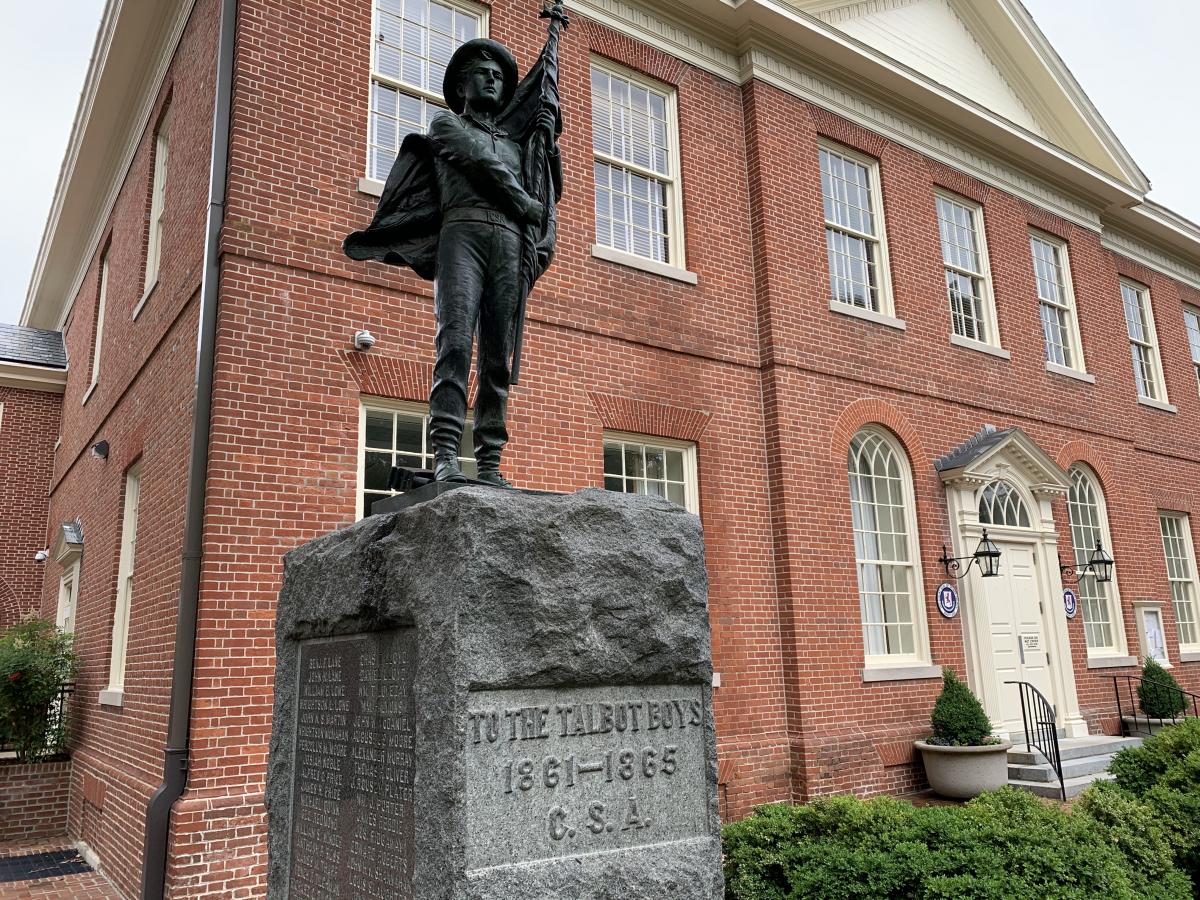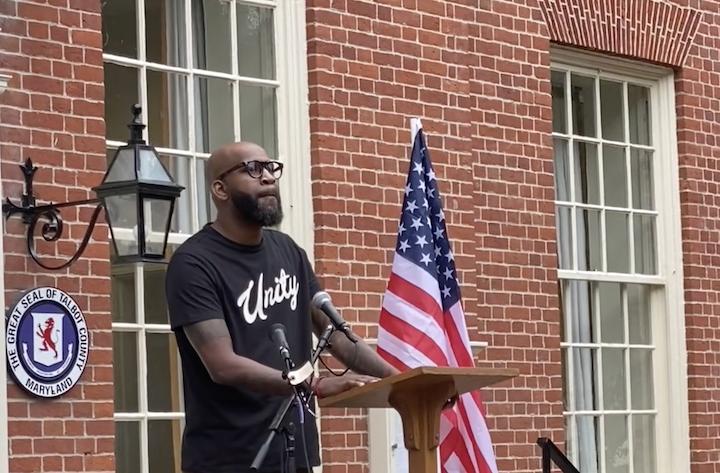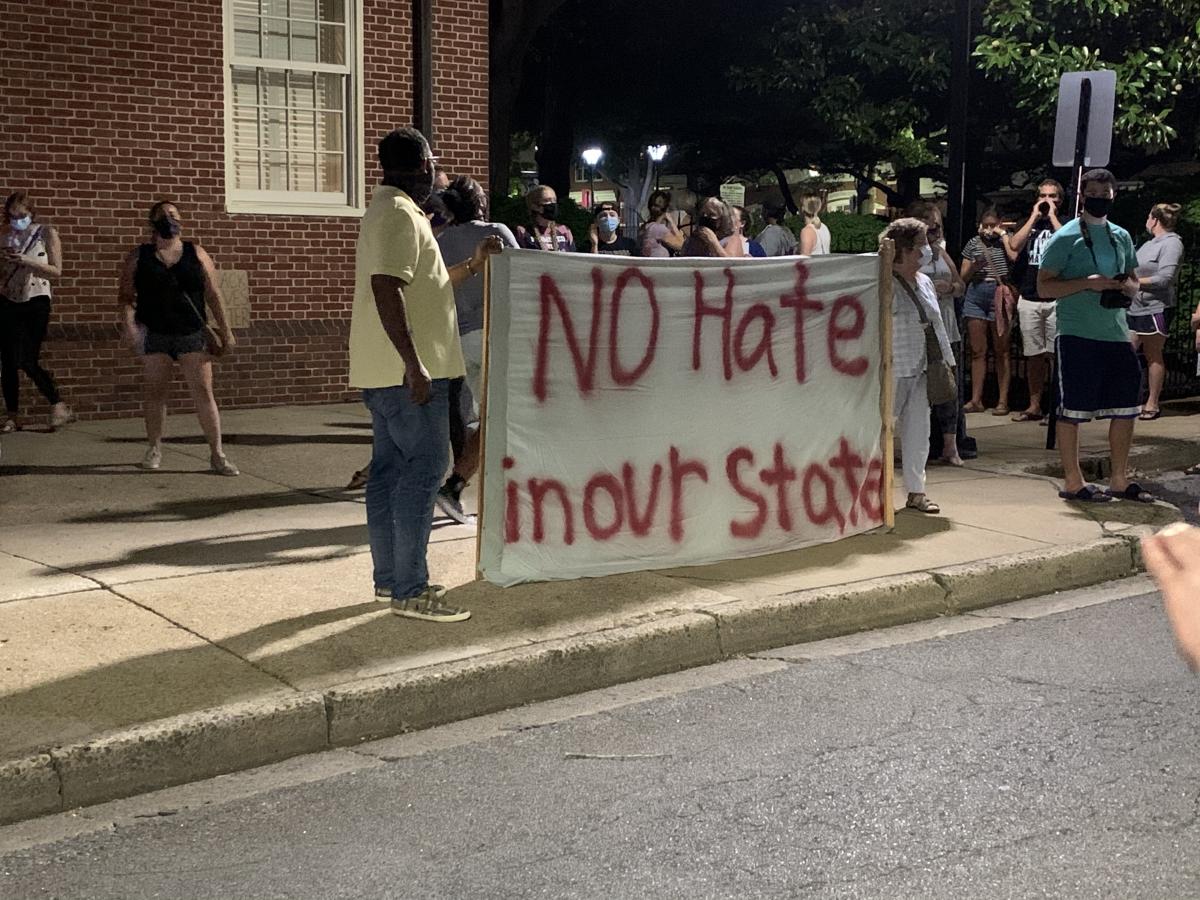Following the Sept. 14 vote for its relocation, Talbot County officials are beginning initial steps to remove the Confederate monument from the courthouse green.
The administrative process includes seeking approval from the town’s historic district commission for the monument’s removal and likely will require a bid process for its removal and relocation.
As that process continues, those who have been working to keep the monument at its current location are seeking out possible Talbot County sites for its relocation.
The county currently is preparing an application to Easton’s Historic District Commission, Talbot County Council Vice President Pete Lesher said he was told by staffers.
An application would need to be submitted by Monday for the monument’s removal to make the commission’s Oct. 11 agenda, Lesher said Wednesday in an email. If the application is heard Oct. 11, the commission could take action at its Oct. 25 meeting.
“The HDC application is the appropriate first action ,” Lesher wrote. “No steps have been taken on the physical removal until we get through this initial action.”
Lesher said he wasn’t yet aware of a bid process for the monument’s removal, but said “the county has rules for the disbursement of funds, and I am sure this project falls within them.”
Asked about the possibility an appropriate site for the monument could be located in Talbot County, he said “No one has proposed to me an alternative site.
“It seems that a publicly accessible site that is associated with the Talbot Boys named on the monument — such as the Cross Keys battlefield — would be hard to equal,” Lesher wrote.
“Others searched for over a year to find a site, without success,” he said. “I give (Councilman Frank) Divilio great credit for finding and securing such a suitable and appropriate site.”
Since the Sept. 14 vote, David Montgomery, president of Preserve Talbot History, has said several Talbot County sites have been offered for the statue’s new location.
In a Wednesday afternoon email, Montgomery said the group has not had any “formal discussions with Council members about possible sites.
“We are still doing our homework and hope to have something solid to discuss soon,” he wrote.
Montgomery added that several site characteristics have been discussed. Those are:
• Physical feasibility, that the site be accessible to moving equipment and provide a stable base.
• Public access, now or in the future, so that the educational purpose can continue.
• Security, so that random or political vandalism can be discouraged.
Divilio, who previously had joined a 3-2 council majority in voting against the monument’s removal, introduced an administrative resolution during the Sept. 14 council meeting to move it to the Cross Keys Battlefield in Harrisonburg, Va., “a private park, under the custody, care, and control of Shenandoah Valley Battlefields Foundation….”
The resolution requires the monument’s removal and relocation to be paid by private funds.
Although the foundation had agreed to take the monument, its executive director sent a letter shortly before the Sept. 14 meeting noting the foundation’s monuments policy supports keeping a monument at its original location, with relocation within the county the next best option.
However, the letter also reiterated the foundation’s willingness to accept the monument and become its permanent steward “if and when it is evident that the monument will not and can not remain safely” in Talbot County.
Divilio was joined by Lesher and Councilman Corey Pack in voting Sept. 14 for the resolution. Pack had sought the monument’s removal from the courthouse grounds last year, but his measure was only supported by Lesher.
As a result of the Sept. 14 vote, the federal lawsuit seeking the monument’s removal from the courthouse green is on hold.
After years of debate, protests, letters, emails, public comment, several votes against removal, and the lawsuit, a majority of the Talbot County Council voted Sept. 14 to relocate the monument to a battlefield site in Virginia.
Three days later, a federal judge granted a motion for a limited stay, putting the case on hold for 30 days and requiring a joint status report by the end of that period.
An attorney for Talbot County sought the stay in a Sept. 16 consent motion, noting “Removal of the statue is the central issue in this litigation.
“Because the statue is a historic structure within the meaning of local preservation laws, some additional administrative steps are required before removal is effected, including a public hearing before the local commission charged with certifying that removal is appropriate under the related local regulations,” Kevin Karpinski, the county’s attorney in the case, wrote in the motion.
Karpinski said the attorneys for the organizations and individuals who had filed the lawsuit had “graciously consented to this request for a stay.
“The County respectfully submits a temporary stay is in order to: 1) permit the parties to determine whether a compromised solution is a possibility in light of this recent development and pending developments in the administrative process; and, 2) to avoid unnecessary consumption of the Court resources,” he wrote.






